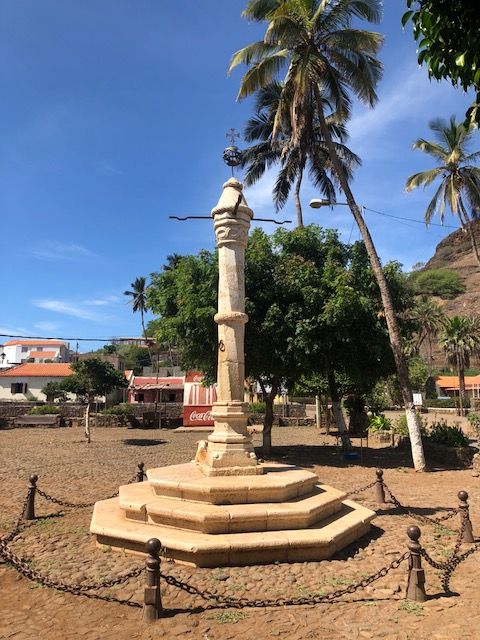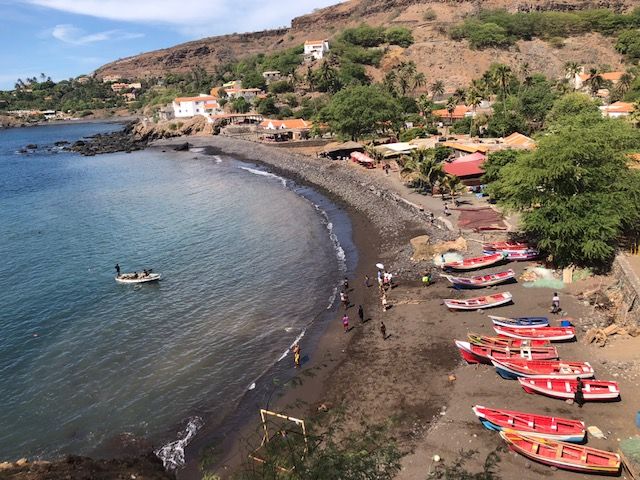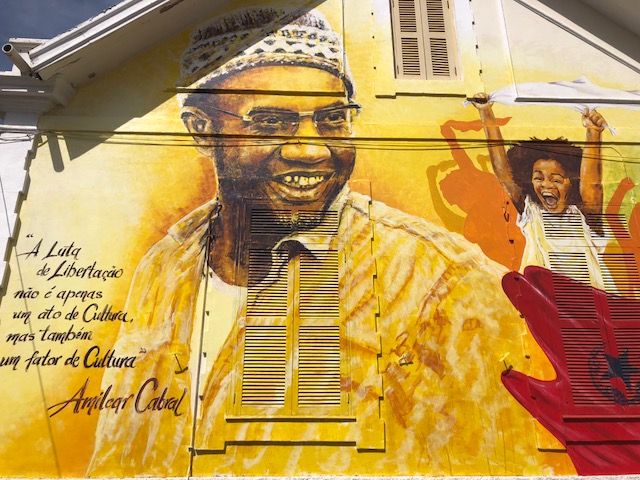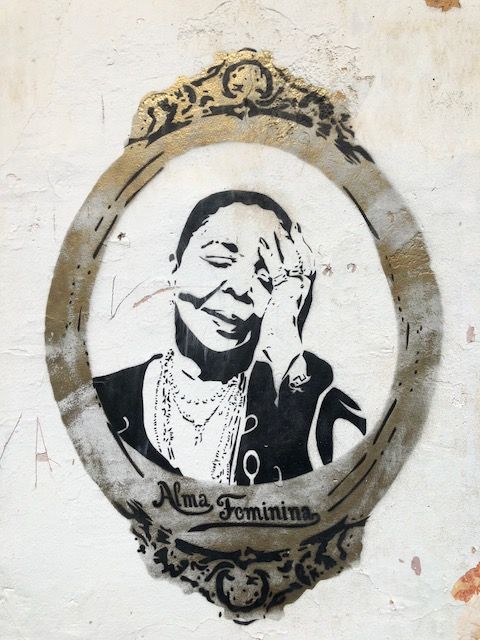You can tell a lot about a country by looking at its heroes. They represent the best that a country has to offer; in sport, the arts, politics, social work, philanthropy, medicine and science. You usually don't have to look hard to locate them. They are immortalised in statues, museums, artwork, songs, street names and bank notes.
In Cape Verde, two of the country’s biggest heroes are revolutionary freedom fighter Amilcar Cabral and celebrated singer Cesaria Evora.
Off the coast of West Africa, in the Atlantic Ocean lies the archipelago of Cape Verde (or Cabo Verde in the native Portuguese). Nine of the ten volcanic islands are primarily inhabited by the descendants of Portuguese colonists and African slaves.
The domestic population is small, just over half a million, but drought, famine and unemployment in the second half of the 20th Century drove many people overseas and today there are more Cape Verdeans living overseas than here.
Curiously, one significant pocket of expats lives in Boston, a legacy of the 18th Century New England whaling industry. One of the Receptionists at my hotel has family living in Boston. Until recently she too lived there, but she says that she has now chosen to call Praia (the capital) home.
Incidentally, remittances (money sent home from expats overseas) represents over 20% of the country’s GDP. Families will typically use this money for day to day expenses, health and education costs.
This country was originally uninhabited. It was settled by the Portuguese in the late 15th Century and flourished as a centre of the slave trade, an important staging point for enslaved Africans being forcibly transported to the Americas by sea.
The first capital at Ribeira Grande (now known as Cidade Velha or the Old City) is now a UNESCO World Heritage site and is located 15km from the present day capital Praia (the pronunciation is similar to the English word ‘prior’)
On a half-day visit you can see the ruins of the Royal Fort of Sao Felipe, the Cathedral, the Sao Francisco Church (currently being renovated) and Monastery, and the pillory on the Town Square where slaves were chained up and displayed. It’s disturbing to think that the fate of so many people was decided in this small, nondescript place.

Interestingly, the Cidade Velha was also host to some famous visitors over the years. In 1497, the Portuguese explorer, Vasco de Gama visited en route to India and then in 1498, Christopher Columbus stopped during his third visit to the Americas. Somewhat less welcome was the English pirate/explorer, Sir Francis Drake, who in 1585 ‘sacked’ the City.
In 1772, Captain James Cook visited at the start of his second voyage of discovery and in 1832, Charles Darwin visited on the Royal Navy Research ship, the HMS Beagle, at the start of a five year voyage around the world.

In 1878, slavery was officially abolished but the islands remained under Portuguese control until 1975, when the country gained independence.
The road to independence was not smooth. The decade prior to independence was marked by an armed struggle in partnership with revolutionaries from Guinea-Bissau, another Portuguese territory in West Africa, and with backing from both Cuba and the Soviet Union.
It was from this conflict that a charismatic, socialist freedom-fighter named Amilcar Cabral emerged.
Amilcar Cabral's father was born in Guinea-Bissau and his mother in Cape Verde. He was born and raised in Cape Verde, but was later educated in Lisbon, where he opposed the ruling dictatorship in Portugal and supported independence for Portugal’s African colonies.
He returned to Africa after his studies and between 1963-1973 formed a party that initially sought independence through peaceful means but ultimately led to a guerrilla style war against the Portuguese Government. It evolved into one of the most successful wars of independence in African history but he didn’t live to see independence granted in first Guinea-Bissau and then Cape Verde.
He was assassinated in Conakry, Guinea in January, 1973.

The Sala-Musee Amilcar Cabral (the Amilcar Cabral Museum) in Praia examines his life, his philosophy and his legacy.
In the midst of the armed struggle against colonialism he was instrumental in constructing schools, health clinics, roads, and agricultural projects, which were all aimed at improving the lives of rural communities. He was Africa’s ‘Che Guevara’, a man for the people.
Today, Cape Verde, is one of Africa’s most stable democracies and one of only five countries to ‘graduate’ out of the UN’s least developed countries list (LDC). https://news.un.org/en/story/2018/03/1005072
The other national hero is singer, Cesaria Evora. I spotted some wonderful street art featuring her face just around the corner from the hotel but only found out her name when I also noticed her face on stamps and the 2,000 escudo note.

Cesaria was also professionally known as the ‘Barefoot Diva’ as she often appeared on stage without shoes. She sang a type of Cape Verde blues called ‘morna’. Her sentimental folk tunes, sung in Creole-Portuguese, told stories about slavery, her country’s isolation and emigration.
In 2004, she won a Grammy Award for Best Contemporary World Music Album. She was well known in Europe and America, and even toured Australia. If you haven’t heard of her please google her name.
I particularly love the song ‘Sodade’ in which she sings goodbye to friends leaving for São Tomé (a recurrent theme in Cape Verde life with so many citizens emigrating abroad)
What new heroes will emerge in the next century?
This is a small country at a crossroads. How will they consolidate their recent gains? There are challenges ahead. Only 10% of the land is arable, there is extensive mountainous terrain, limited mineral resources, and an arid climate.
The big news locally is that a Macau business group has gained approval to build a large ‘casino island’ just off the coast near Praia. This casino investment along with tourism will form an important part of the country’s future economic goals including employment for the 35% of the population now aged 0-14 years.
https://thediplomat.com/2017/04/cabo-verdes-gamble-chinese-island-building-in-the-atlantic/
I only managed to visit the capital Praia and the Cidade Velha and there are nine other islands to explore. I did try (several times) to venture further afield but every time I tried to organise a day trip the price increased depending on who I was talking to in Reception. In the end I cut my losses and renegotiated a short (but overpriced) tour of the Old City.

My hotel didn't have a TV so I read a lot.
I understand that this island, Santiago, has the greatest African influence, and that some of the other islands are very ‘touristy’. I think that it would be fun to island hop by plane and ferry, but for my first trip it was great to visit the main island and see what makes Cape Verde tick. You could easily spend a few days in Praia (visit the main cultural sights) and organize the flights and accommodation for the other islands.
However, I’m happy that I didn’t race around trying to see and do everything. I enjoyed the hours spent walking around the capital and sitting in various cafes ‘people watching’, listening to local music and chatting to locals and tourists.
I think that you can always find better beaches for swimming or restaurants for eating but that the people here are the drawcard.
Where on earth....
